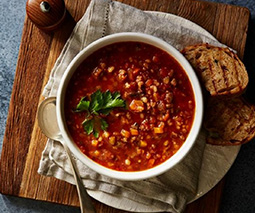The one strategy parents aren’t trying to get their kids to eat veggies

It is a common understanding that children do not like vegetables, but why is this? Often parents are so desperate for their children to eat something orange and green on a daily basis that we do not teach our children to like vegetables. It is as simple as that!
Children like the foods that we teach them to like
We reward our kids with lollies and party food, and even fruit on a daily basis. Congratulating them for eating their dinner with dessert, or giving them treats for other good behaviours contributes to these behaviours. It is often our own habit of craving and treating ourselves with sweet foods that infers that vegetables are inferior to sweets and lollies.
It is also important to remember that small children in particular, do not need a lot of food. This contrasts with our belief that they always need more, and parents are often stressed that they are not eating enough. When they turn away their vegetables at the end of a long day, it is often because they are not hungry after eating pieces of sweet fruit, yoghurt treats, milk and juice throughout the day.
Change the focus
Rather than focusing on what veggies our children are avoiding, change the focus and try to lower your expectations. It is unlikely that your child will happily sit down to eat a plate of boiled carrots and peas, but they may enjoy some baby tomatoes or cucumbers through the day. You can also look to incorporating vegetables into things they love—such as pasta sauce or juice—to get the nutrients they need.
Change the way you talk about food
The behaviours you focus on are the behaviours which will continue. If you emphasise the foods your child is not eating, they will continue avoiding it to gain attention. Rather, try to limit conversations around food entirely. Serve your regular meals or special mummy juice, and give reward and praise when good foods, including veggies, are eaten. And, most importantly, speak about healthy foods as you would any other food.
Below are some ideas on ways to increase your child’s vegetable intake:
- Do not make a fuss and insist that the children eat all their vegetables. Sometimes, insisting that a child eats vegetables can make them stubborn in an attempt to exert their independence.
- Put some vegetables on their plate and encourage your child to try them. If they still do not want to eat them, allow them to leave them but at the next meal continue to put include them on the plate. Your child will start eating them if they are hungry, but the key is to avoid offering other foods in replacement of their veggies as they will then learn that leaving peas or broccoli will result in extra potato or meat.
- Children watch and learn, so it is important to be a role model for your child. Let them watch you eating and enjoying a variety of vegetables.
- Ask your children to choose a type of vegetables for dinner from a small selection. This way they feel they have control around what they are eating. For example, ask: “Would you like peas or beans with your chops tonight?”
- Aim for the family dinner plates to be half filled with different vegetables. If plain, boiled vegetables are too bland, try different cooking methods such as stir-frying or char-grilling. This will mean that the same vegetables are eaten in numerous ways, keeping them exciting and interesting. There are a range of healthy marinades available that can be added to vegetables to add variety.
- If your children are strongly opposed to all varieties of vegetables, remember that they can be replaced with salad. Salad can be added as a side to most meals and is a great addition to your children’s favourite pasta and meat dishes. Have a look for low-fat salad dressings available in supermarkets to add extra flavour to a range of salads.
- Try adding small, chopped pieces of tomato, capsicum, zucchini and carrots to dishes such as spaghetti Bolognese, stir-fried rice or sauces. These will often end up hidden in their favourite pasta dinner, and only very determined children will pick out all the pieces.
- Add tomato, mushroom, eggplant, onion, capsicum and tomato to homemade pizzas. Try involving your child in decorating their own pizzas. Children are more likely to eat foods they have had some role in making. Colourful vegetables can make decorating pizzas fun while distracting from your children’s issues with them.
- When making treats such as cakes or slices, look for varieties that include different types of vegetables. Zucchini bread, pumpkin scones and carrot cake are all good choices.
- Grated carrots and zucchini can be added to salmon or vegetable patties and served with a side salad.
Susie Burrell is a Bellamy’s Organic ambassador, pediatric nutritionist and dietician, and mum to 18-month-old twins.








